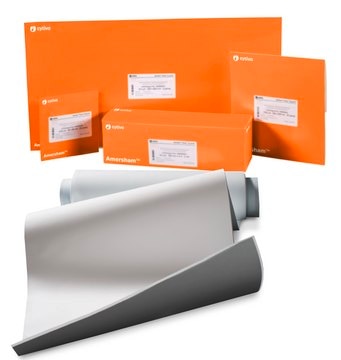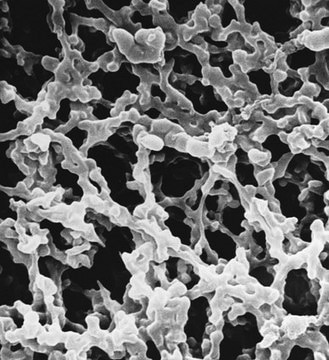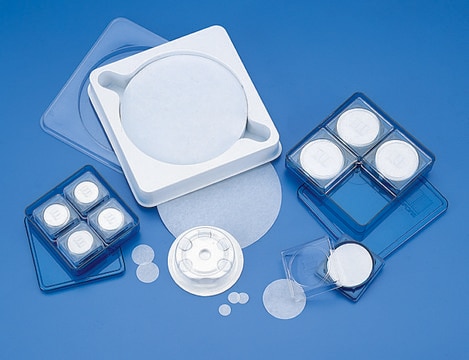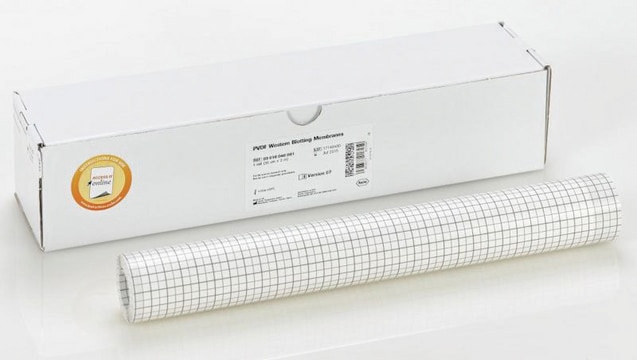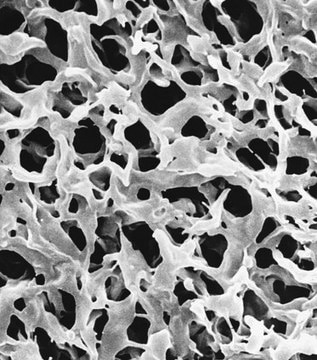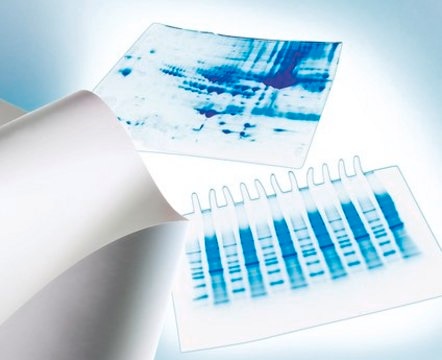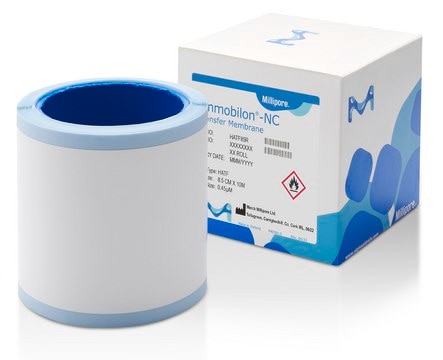Z741975
GVS Transfer Membrane
Nitrocellulose, 0.45 um, W × L 30 cm × 3 m, roll of 1 roll
Sign Into View Organizational & Contract Pricing
All Photos(1)
About This Item
UNSPSC Code:
41104900
NACRES:
NB.24
Recommended Products
material
nitrocellulose membrane
sterility
non-sterile
packaging
roll of 1 roll
manufacturer/tradename
GVS Life Sciences 1215471
W × L
30 cm × 3 m
pore size
0.45 μm
General description
Description and Use
GVS Pure Nitrocellulose Transfer Membrane is the membrane of choice for all protein or immunoblotting applications.The high sensitivity of GVS Pure Nitrocellulose Transfer Membrane ensures excellent results in all transfers, especially in protein blotting.
Features & Benefits
Typical Applications
GVS Pure Nitrocellulose Transfer Membrane is the membrane of choice for all protein or immunoblotting applications.The high sensitivity of GVS Pure Nitrocellulose Transfer Membrane ensures excellent results in all transfers, especially in protein blotting.
Features & Benefits
- For procedures that require optimum resolution
- Membrane of choice for protein or immunoblotting applications
- Low background, easily blocked
- BSA binding capacity up to 100μg/cm2
- Wets out naturally
- Compatible with all detection systems
Typical Applications
- Westerns
- Protein & immunoblotting
- Northerns
- Southerns
- Dot/slot blots
- Radiographic, chromogenic and chemiluminescent detection systems
Certificates of Analysis (COA)
Search for Certificates of Analysis (COA) by entering the products Lot/Batch Number. Lot and Batch Numbers can be found on a product’s label following the words ‘Lot’ or ‘Batch’.
Already Own This Product?
Find documentation for the products that you have recently purchased in the Document Library.
Maria J Pereira et al.
Molecular and cellular endocrinology, 503, 110696-110696 (2020-01-01)
We aim to investigate the expression of the glucagon receptor (GCGR) in human adipose tissue, and the impact of glucagon in glucose uptake and lipolysis in human adipocytes. GCGR gene expression in human subcutaneous and visceral adipose tissue was demonstrated
Xiaojun Xu et al.
Journal of Cancer, 11(8), 2318-2328 (2020-03-05)
Introduction: For pathological diagnosis of pancreatic neuroendocrine neoplasms (pNENs) the routinely used immunohistochemical markers are chromogranin A (CgA) and synaptophysin (Syn). Their ability as prognostic markers is not well established. A splice variant of actinin-4 (Actn-4sv) was recently found to
Nikolaj Kirketerp-Møller et al.
Journal of immunology (Baltimore, Md. : 1950), 204(6), 1598-1606 (2020-02-12)
C1q/TNF-related protein (CTRP) 6 is a member of the CTRP protein family associated with the regulation of cellular and endocrine processes. CTRP6 contains collagen and globular structures, resembling the pattern recognition molecules (PRMs) of the classical and lectin complement pathways.
Alireza Bonakdar et al.
International journal of biological macromolecules, 140, 69-77 (2019-08-14)
Although urine cytology and cystoscopy are current gold standard methods in diagnosis and surveillance of Bladder cancer (BC), they have some limitations which necessitates novel diagnostic approaches to compensate their drawbacks. In this regard, Nuclear Matrix Protein 22 (NMP22) is
Mi-Hyun No et al.
Pflugers Archiv : European journal of physiology, 472(2), 179-193 (2020-02-13)
Aging is associated with vulnerability to cardiovascular diseases, and mitochondrial dysfunction plays a critical role in cardiovascular disease pathogenesis. Exercise training is associated with benefits against chronic cardiac diseases. The purpose of this study was to determine the effects of
Our team of scientists has experience in all areas of research including Life Science, Material Science, Chemical Synthesis, Chromatography, Analytical and many others.
Contact Technical Service